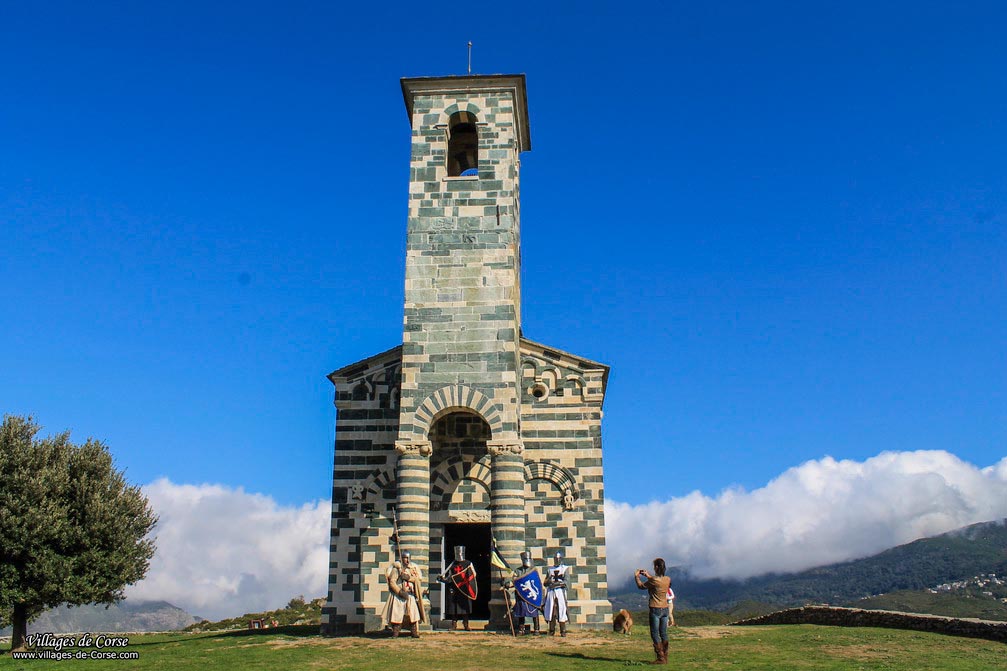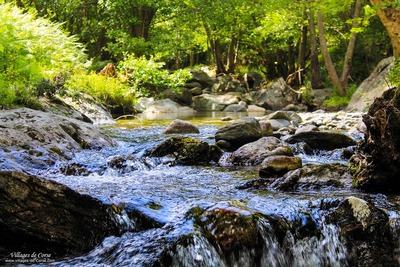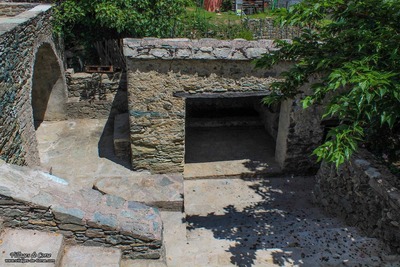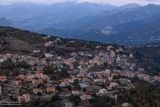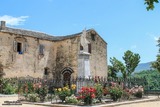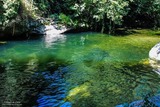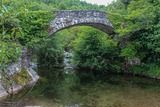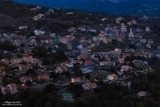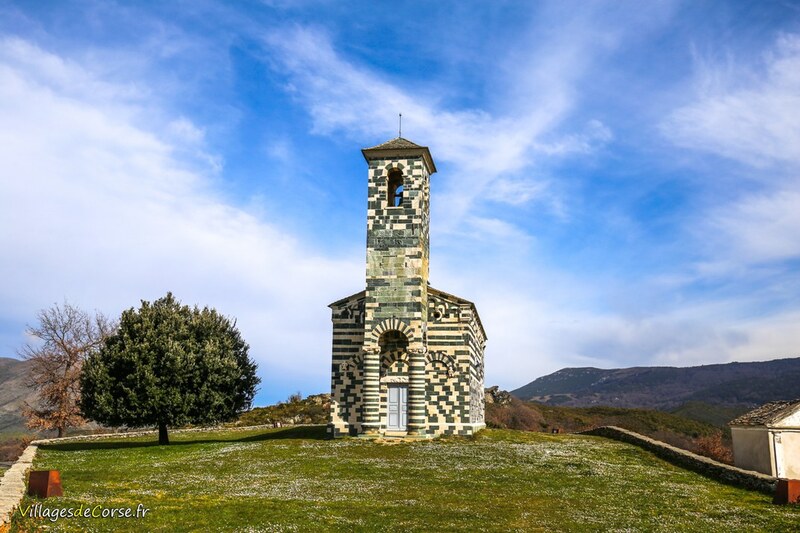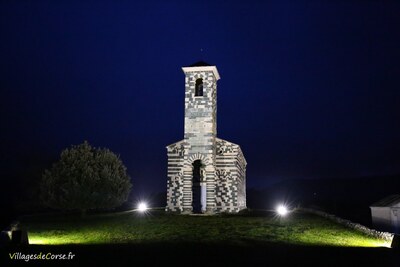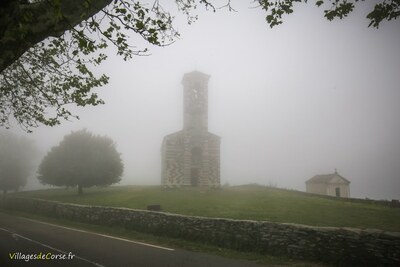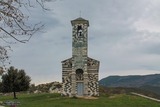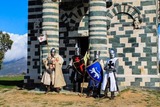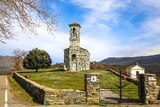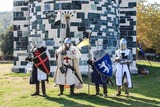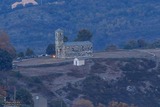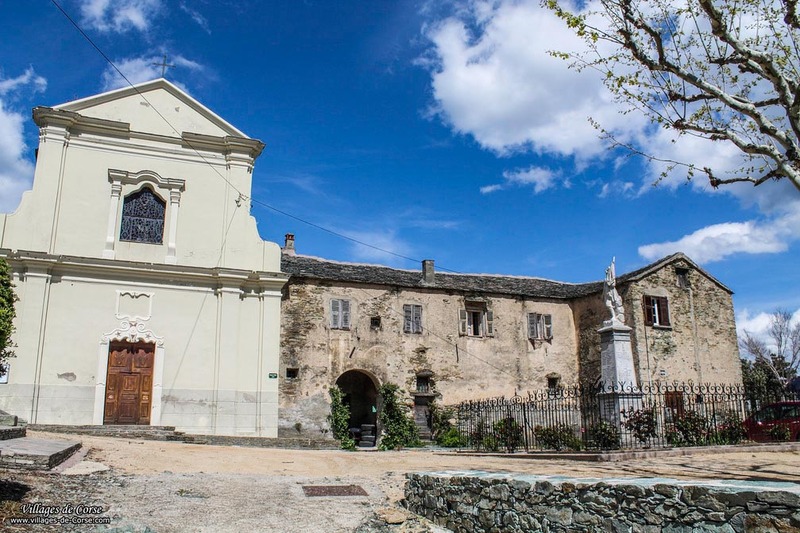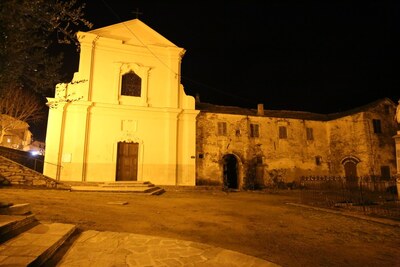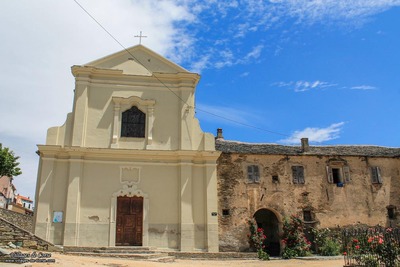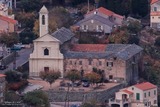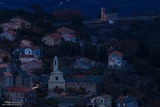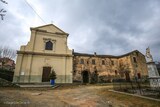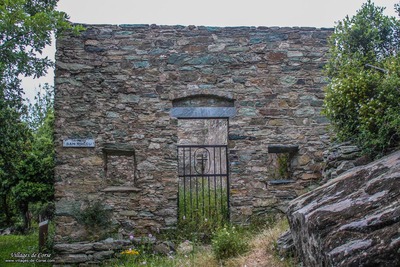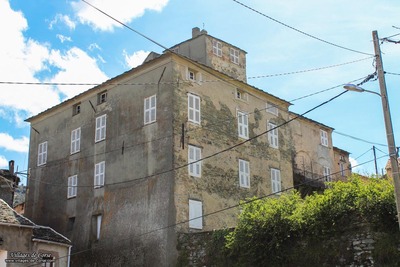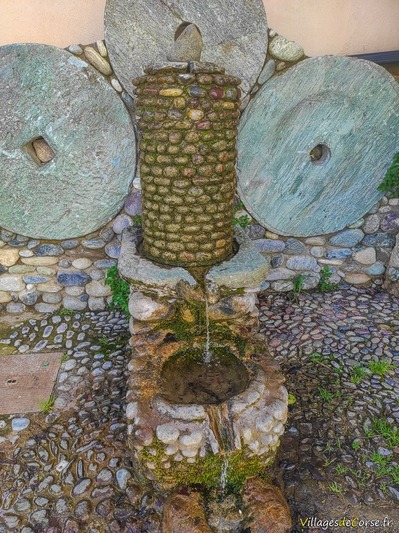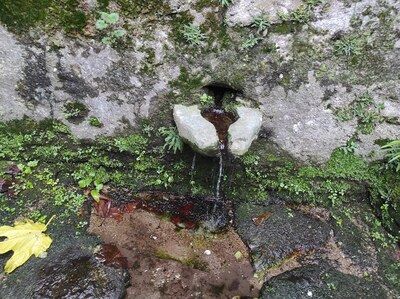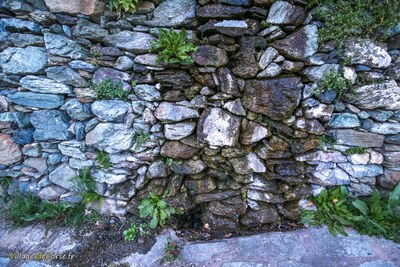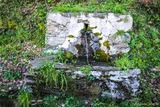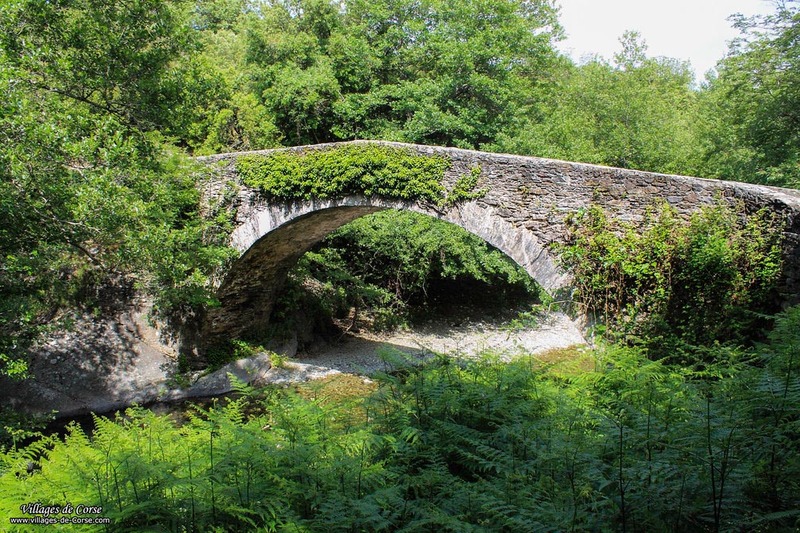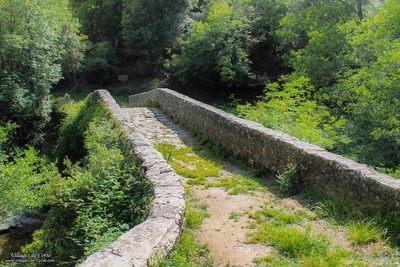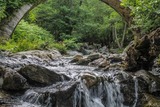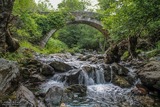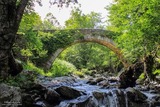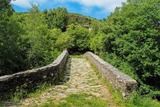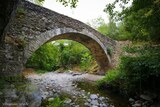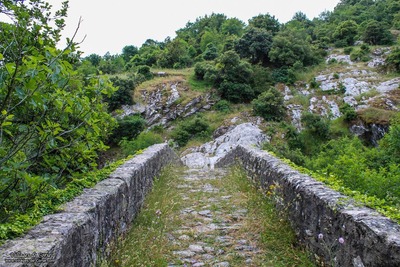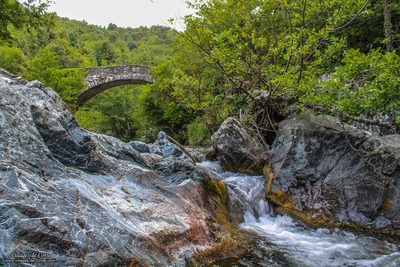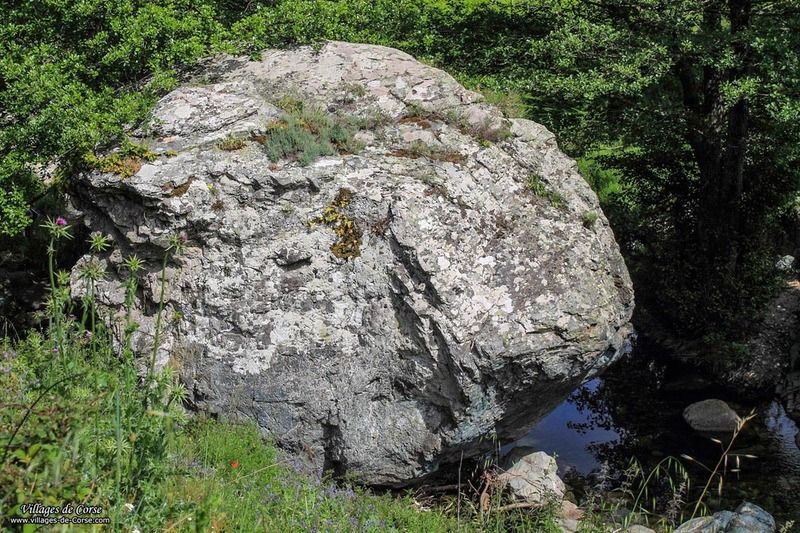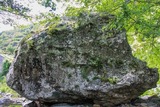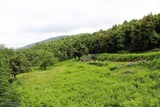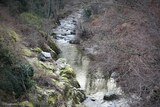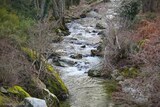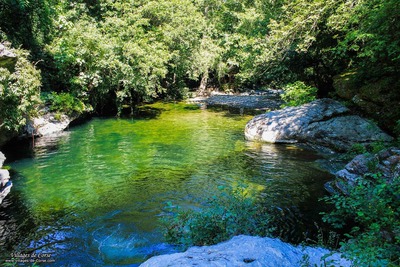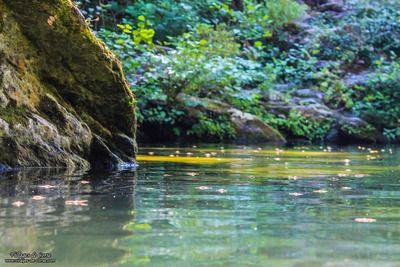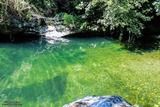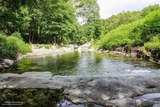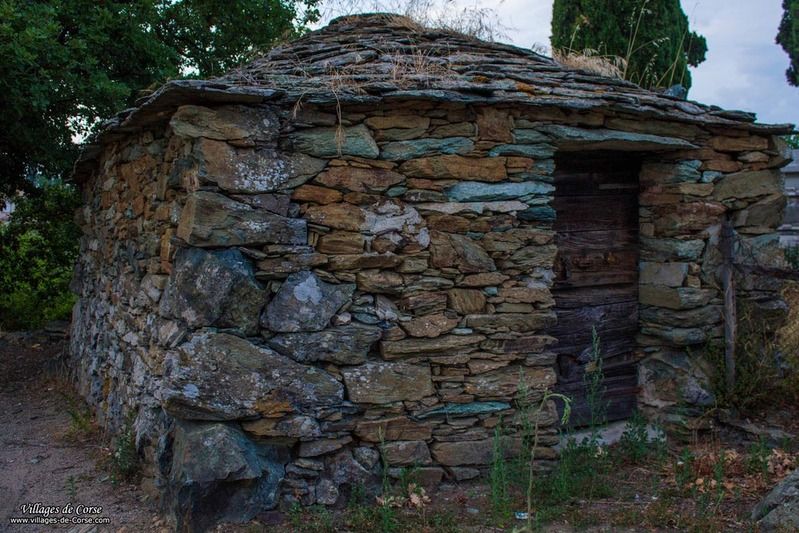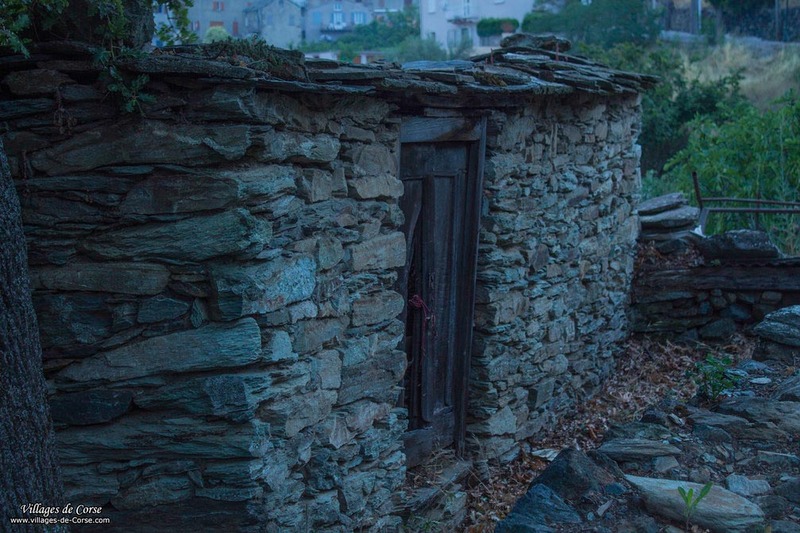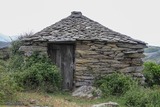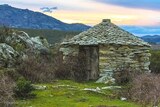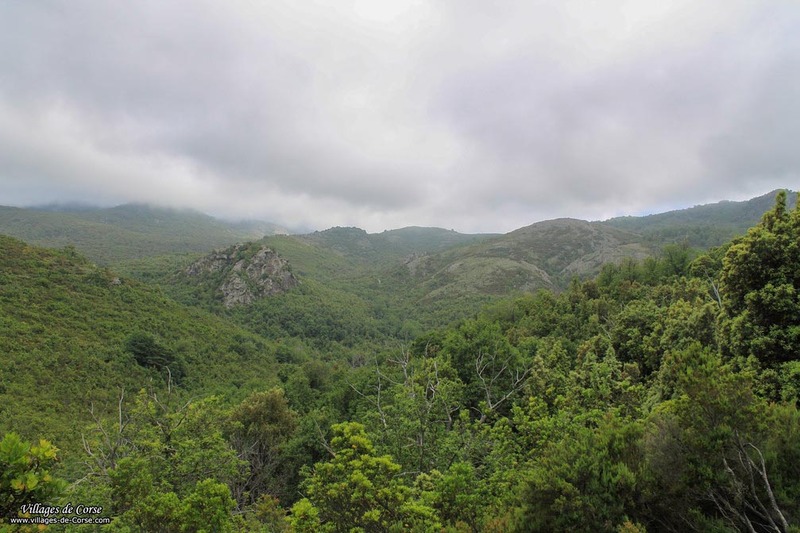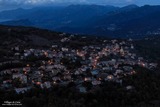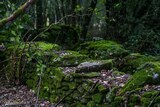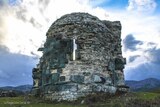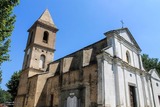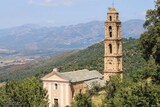Murato
Muratu, 564 PopulationInsee Murato 239 to 1112 meters 2038 hectares
To discover Murato (Nebbiu) - Google Map
Religious Heritage
Saint Michael Church (San Michele)
The Church of Saint Michael is one of the most emblematic buildings of Corsica. Located one kilometer before the entrance to the village of Murato, which is sometimes said to be overshadowed by it, Saint Michael (San Michele di Muratu) is mentioned in the writings of Prosper Mérimée. With its Pisan style and Romanesque architecture, its walls are made of white limestone and blue serpentine stones from the Bevinco River. Dating from 1137, it was built - according to legend - in one night by Angels.
The Church is visited all year round by thousands of tourists, as well as locals, and regularly hosts weddings due to its unique setting.
Patronal Feast on May 8th
Every May 8th, Murato celebrates its patronal feast with a procession that starts at the war memorial, used to pass through the incrucciata before descending to the Saint Michael Church where the mass is held.
Parish Church of the Annunciation
The Church of the Annunciation - the Annunziata - hosts most of the masses in the village of Murato. Located at the entrance of the village, the building, with exposed stone except for the façade of the front, is below the road.
The Church square, adorned with plane trees, offers a beautiful view of the village. It is also a gathering place for religious services held throughout the year and where the traditional Christmas fire is organized.
In the center of it stands the village's war memorial.
Murato Convent
Built in 1615 by Franciscan Recollects, the Murato Convent is a historic site that Pascal Paoli requisitioned as his headquarters, and it was also used by the resistance during the Second World War.
The convent is adjacent to the Parish Church.
Saint John the Evangelist Church
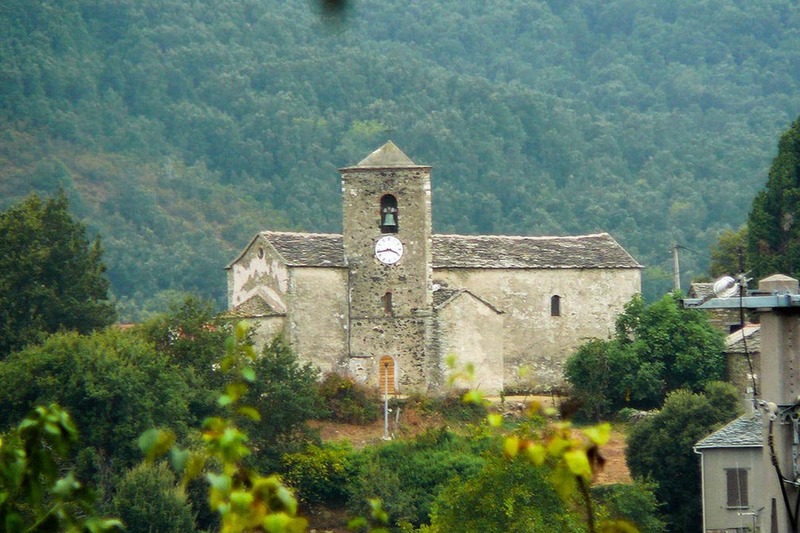
The Church of Saint John the Evangelist - San Ghjuvanni - dates from the 16th century and is located in the eponymous district in the upper part of the village.
Former Parish Church
Saint John was the parish church of Murato before the construction of the Annunziata. Today, the Church is only open on June 24th for Saint John, where a mass is celebrated, and on August 16th for Saint Roch - the Patron Saint of bakers - during which small breads are blessed, a tradition that dates back to the Saint Roch chapel a little further away.
The Church also features a unique triangular bell tower (with a wall clock) erected in 1880, of which there are only a few examples in Corsica, including one in Corte.
Saint Roch Chapel
The Saint Roch Chapel (San Roccu) is located slightly outside the village, continuing southwest after Saint John, along the village's heritage trail - History of Stones and Water - on a dirt path amidst oaks and scrubland.
The building is ancient and in ruins; the roof collapsed a long time ago. A few meters away, a spring flows through the Saint Roch fountain.
Historical Heritage
The Corsican Mint Palace
The Corsican Mint Palace - A Zecca - is a very large building of intertwined stones and slate, built in 1437 by the Morati family, and chosen by Pascal Paoli to mint Corsican currency. The first silver coins appeared in 1763.
The perfectly preserved building consists of a hundred windows and dozens of rooms.
Prosper Mérimée in Murato
Prosper Mérimée stopped there on October 1, 1839, and although it has nothing to do with the building, he claimed to have been served admirable hams.
Washhouses
The village of Murato has two washhouses in very good condition that could still fulfill their function today. Built of stone and topped with a slate roof, they are fed by spring water that passes through several successive basins.
The washhouses were once used for laundry, both economical and convivial; they were a place of life and social gatherings. The first washhouse is located at the supranu in the upper part of the village. The larger one is located at the suttanu and also features a fountain.
Fountains and Springs
The village has many springs and fountains that once served as water points for the villagers of Murato.
River and Genoese Bridges of Murato
Ponte di e Venture
Murato has two remarkable single-arch Genoese bridges, under which flows the Bevinco River. These bridges once allowed the passage of donkeys to access garden plots.
Upstream of the Bevinco, one kilometer south of the village, is the Genoese bridge of the Croix des Vents - Croce di e Venture - where the winds (Mistral, Libecciu) intersect, and a shorter path leads to this bridge.
Ponte à Teghja
Closer to the village, Ponte à Teghja blends with the rock above a small basin. The path starts at the southern exit of Murato.
Its name and its plural variant - Ponte à e Teghje - refer to the old slate quarry, with flat stones used to cover the roofs of houses.
Pont Neuf
On the heights, the new bridge replaces the old structure that was swept away by the river's flood during violent rains that occurred in the 1960s and 70s. It is the only road bridge in the village and allows access to the Bigorno pass.
The river near the new bridge also features a small basin shaded by an enormous stone block about 6 meters high, which adds to the charm of the place.
River
The river of Murato carves the valley through an oak forest. It has many remarkable basins with pebble beds covered in algae, among which the famous Corsican trout hides.
It should be noted that this is indeed the Bevinco River, and it is customary in Corsica to refer to any watercourse (u fiume in Corsican means river or stream).
The Icehouse of Murato - A Nivera
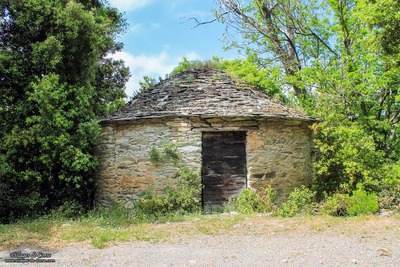
The icehouse of Murato was the precursor of the freezer; the one photographed is the most accessible, but the village had several nivere that produced ice for Bastia and earlier for the Genoese governors.
A Nivera is located above the New Bridge in the middle of the forest and sheltered from the sun, in a particularly humid spot. It was built in 1870 and ceased operation with the arrival of electricity at the beginning of the First World War.
Its depth of 7 meters allowed the production of natural ice in winter. In summer, a nivera was used to store the villagers' food, protected from the heat (charcuterie, meat, cheese, etc.) and in complete confidence. During hot periods, deliveries were made at night by donkey-drawn carts.
The success of the nivere of Murato coincided with their era when ice creams and sorbets made their appearance.
A Venezuelan President of Murataise Origin
A lawyer by training, Raúl Leoni is the son of a Murataise expatriate in Latin America. He was the president of Venezuela from 1964 to 1969 and had to face Pietri, an opponent from Cap Corse!
On the occasion of a trip to France in 1970, Raúl Leoni came to Corsica and to Murato, the land of his origins. Today, the largest hydroelectric dam in Venezuela bears the name of Raoul Leoni.
Multimedia
Photos of Murato
Pagliaghji, Mountain
Video of Murato
Murato in 1970, the first electrified village in Corsica in 1923
INA (National Audiovisual Institute) archive video of a 1970 report on the Nebbiu village of Muratu. In these images, the inhabitants recount the arrival of electricity in 1923 thanks to Giuseppe Marconi, an Italian from Bologna, who installed a turbine powered by the Bevinco River.

